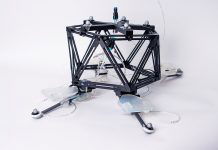
Imagine a robot that can grow stronger with every movement—just like a living creature exercising its muscles.
Researchers from the Biohybrid and Organic Robotics Group, led by Vickie Webster-Wood, have taken a major step toward that future.
They’ve developed a way to control robots made partly from living muscle tissue, allowing them to move, adapt, and improve their performance over time.
Unlike traditional robots that rely on electric motors or mechanical parts, biohybrid robots are powered by living muscle cells.
These biological “actuators” can contract and relax like real muscles, making movement smoother and more natural.
More importantly, living muscle tissue can strengthen through use, a property no metal or plastic material can match.
This means that a robot powered by real muscle could literally train itself to become more efficient at moving and completing tasks.
However, this adaptability poses a challenge for scientists: how do you control a robot whose power source keeps changing as it gets stronger?
To answer that, Webster-Wood’s team built a computer model that uses reinforcement learning—a type of artificial intelligence that learns through trial and error—to teach the robot how to move effectively, even as its muscles evolve.
In their experiments, the researchers simulated a soft, worm-like robot made of 42 tiny living muscles.
The robot was placed in a virtual environment and given the goal of reaching eight different targets. To move toward each target, it needed to learn how to coordinate its muscle contractions in specific ways.
The team compared two versions of the simulation: one where the muscles stayed the same strength, and another where the muscles became stronger with use.
Surprisingly, the robot with adaptable muscles didn’t struggle to learn—in fact, it performed even better.
“At the start of this experiment, we questioned whether or not the AI agent would be negatively impacted by muscle adaptability,” said Webster-Wood. “However, we found that having adaptable actuators didn’t hurt learning at all.”
Over time, the robot learned to reach all eight targets efficiently, showing that biological growth could actually help rather than hinder robotic learning. The study demonstrates that robots built from living tissue could one day adapt to their surroundings naturally, much like animals do.
“This brings us one step closer to designing and eventually building biohybrid robots that can adapt to the world around them,” Webster-Wood said. “Just like animals, they’ll be able to learn, grow, and thrive in changing environments.”
Source: Carnegie Mellon University.



